An evening with Chef Sri Bala
Introduction
On Friday, June 28, we had an engaging session by Chef Sri Bala. One of the top chefs in the country, Ms Shri Bala has carved a niche for herself as an expert in South Indian cuisine.
Her talk, "Bites of history: The art of culinary revival," was an enlightening experience for anyone passionate about food, history, and culture.
In her session, Chef Shri Bala delved into the fascinating intersection of history and cuisine. She shared insights on how ancient recipes and culinary traditions can be revived and celebrated in modern times.
About Chef Shri Bala
Chef Sri Bala is a Chartered Accountant, Company Secretary, and Law Graduate by training. Ranked among India’s Top 30 Chefs, Shri Bala has played a major role in chronicling and reviving traditional culinary practices. Her journey from finance to food is indeed inspiring. Chef Sri Bala’s work includes themed promotions at prestigious hotels, educational workshops, and collaborations with renowned chefs like Gordon Ramsay.
Indus Valley
The genesis of India probably lies in the Indus Valley. So, Chef Bala began with the food culture of the Indus Valley civilization. Archaeological remains indicate that the Indus Valley people were well equipped to cook a wide range of cuisine. The ingredients in their food included cereals like millets, barley, wheat and vegetables Iike brinjal, and ladies finger (okhra). They also ate meat, mostly goat, sheep and chicken. They also used oil.
Sangam (300 BC to 300 BCE)
This is also referred to as unified Tamizhagam. The empire included the whole of Kerala and Tamil Nadu and parts of Andhra Pradesh and Karnataka. The period may have extended upto 600 BCE. Unlike the Indus Valley, in the Sangam period, there was not much consumption of chicken. The meat items consumed in the Sangam period included: beef (most popular), venison, partridge, mutton, quail, rabbit, pigeon, tortoise and sea food.
Much of Chef Sri Bala’s research has focused on the Sangam period. During the session, she shared several insights about the Sangam period.
Landscapes
The food habits were based on the landscape, i.e. the local terrain.
Kurunci- This refers to rugged and remote mountains. The inhabitants, known as "kuṟavar" or "vēlir," are skilled hunters and gatherers who live in harmony with the harsh environment. The associated deity is "Murugan," the god of war and mountains. The menu includes hunted animals, honey, millets.
Palai- This refers to deserts. Cactus grow here.
Mullai: This refers to thick forests, associated with maize, beans, thinnai millet, milk. "Mullai" signifies forests and flowers, which are abundant in this region. The inhabitants raise sheep, goats, and cattle. The deity associated with mullai is "Mayyon," the god of rain and love.
Marutam: It means "cultivable land," typically located on the river banks, highlighting the importance of agriculture in South Indian society. Rice, sugarcane, mukkani are consumed here.
Neithal: This refers to the coastal regions. The menu includes seafood, gruel, toddy.
Modern research is indicating that food aligned with the landscape tends to be the most appropriate and healthy for people.
Each region had its own food. There was not much crossover of food from one landscape to another. This was mainly because of transportation limitations.
The interregnum
After the Sangam empire came to an end, there was the interregnum, the period between the end of Sangam and rise of medieval Cholas. This was a dark age as no prominent kingdom came to power. Nomads and chieftains were in charge. They were not educated, unlike the imperial kings. In the absence of a strong government, culinary arts had a setback. A lot of history was also lost as there was no documentation. In short, culinary arts suffered the most in the south during this period.Cross culture
Gradually, food culture started to travel from one country to another. Many of the food items we consume today in India have come from southeast Asia (Malaysia, Thailand, Indonesia), also called SIAM. In general, the South Indian and Chinese influence can be seen in the Asian region (Indonesia, Vietnam, etc). Food from Sri Lanka also reached India.
Marriage enabled this transfer of food culture. Good examples are Jodha Akbar, and Padmavat. Akbar married the Rajput princess Jodha. Padmavat was a Sri Lankan princess married to a Rajasthan king. That is how we see a lot of coconut influence in Rajasthani food preparations.
Another great example is idli which did not originate in India. It came from southeast Asia, probably Indonesia (called kedli). Earlier idly was made only with black gram. Once it came to India, we started adding rice and the black idli became white idli.
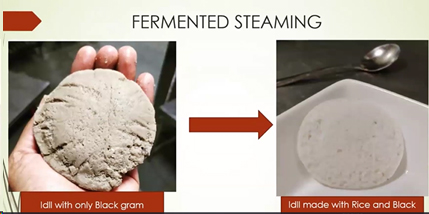
References
Chef Sri Bala provided various references that help us to know more about the cuisine of ancient India.
1025 CE: Chvundarya wrote Lokapkara.
1129 CE: Someswara wrote Manosollasa. There are five divisions. In the third vimsathi (division) comes Annabhoga.
1508 CE: Mangarasa wrote Soopa Sastra.
There is a reference to food with garlic and wheat. This was possibly due to the influence of the Moghuls and the Deccan sultanate.
Weights and measures
Interestingly, there were no weights and measures those days. In fact, there is no reference to weights and measures in cookery books till the 19th century. Cookery books assumed that people knew how much to add. That is why even today, in the kitchen, we add ingredients based on visual measurement.
Foreign influence
The different dynasties added their own footprint to the food traditions of India:
Slave Dynasty: 1206-1290
Khilji Dynasty: 1290-1320
Tughlaq Dynasty: 1320-1414
Sayyid Dynasty: 1414-1451
Lodi Dynasty: 1451-1526
Moghul dynasty: 1526-1857
Notes:
Under the Moghuls, the distinctive Mughlai cuisine emerged. The Mughals also introduced various fruits. The Turko Persian influence on Indian cuisine can also be seen.
Moroccan traveller, Ibn Batuta (1326 CE) has written about Indian food. He has made a reference to samosas. Amir Khusro (1253-1325 CE) has also written about Indian food.
In 1498, red chillies were introduced, following Vasco da Gama’s voyage, as a substitute for pepper. In the early 16th century, tomato came.
Biryani and Halim
We blindly credit the Mughals for inventing biryani. But that is not correct. The name may have been coined by the Mughals, but the technique was known to ancient India.
In Sangam literature, there is a reference to perun choru meaning a big feast. It denotes a meat-based food: one pot meal consisting of meat and rice, with a slow cooking process. The ingredients of biryani are mentioned in perun choru. The Sangam people also had the cooking technique. So, the idea originated in India.
Haleem involves the Mediterranean (countries like Iran) method of cooking: a slow cooking process. The word Haleem comes from Harisa. Slow cooking keeps the meat tender. The meat is cooked in its own fat, not in ghee. The fat of the meat comes out. This is the best method of making haleem.
Food in Hyderabad is better than in other regions including the Middle east, because of the technique and the ingredients. That is mainly because of the improvisation by the opulent Nizams. They wanted to please the British with the best food using the best of best ingredients. For example, (In 1615, potato came to India.) the Nawab of Awadh, Wajid Ali Shah introduced potatoes in Biryani. He had gone to meet the British in Calcutta and could not return to Lucknow. He was living in exile in Calcutta. That is why Calcutta biryani has potatoes.
Chats and Kababs
The Moghuls also introduced chats and various aromatic mixes and concoctions. The Mughal kings consumed Chat on the recommendation of medical practitioners to cool the body and for better digestion. The Chat vessel is covered with red cloth. This is to avoid the ants and also prevent small insects from getting attracted to the pot.
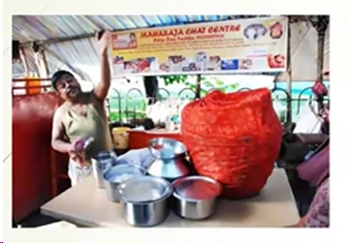
Black pepper vs. Chillies
Black pepper is referred to as King of spices or Black Gold. Today we eat a lot of chillies but very little pepper. Chillies are not in the same class as black pepper. The word chilly in Tamil (Millagai) means: as if it is pepper.
Why are chillies so popular today and not back pepper? The Dutch East India Company literally took away the pepper from us and replaced it with chillies. This coincided with Vasco da Gama’s voyage to India. Exports generated more money. So, in the domestic market, pepper was substituted by chillies.
Meanwhile, for mummification (embalming bodies), Egyptians needed pepper. They would come to the port city of Musri, (now a landlocked place) in Kerala to buy black pepper and pay us in gold.
Besides the focus on exports, another problem is that pepper gives an unappealing colour (black or red brown) to the food. Red chillies and food colours began to be used to change the colour. (Some of these colours are carcinogenic and are being banned by the government.)
Voyages were undertaken for pepper and wars were fought. The Battle of Colachel marked a major setback for the Dutch East India Company's colonial ambitions in India. They lost their influence in the Malabar pepper trade, a significant source of wealth. The victory solidified King Marthanda Varma's power and established Travancore as a dominant regional kingdom. They captured Dutch weaponry and knowledge. This helped modernize the Travancore army.
Mandi, a Bedouin, barbeque technique
The technique was used during the war to keep the cooking (and the presence of the soldiers) hidden. The pit is dug underground. Modern techniques have changed this approach. Rana Pratap introduced Khad cooking.

Sanjha Chulha: Community cooking
In Punjabi culture, "Sanjha Chulha" (साँझा चूल्हा) translates to "community stove." Traditionally, these were mud or brick ovens built in a central location within a village. Here, women would gather to cook meals together. This served not only enabled sharing of recipes and pooling of effort but also fostered social interaction and strengthened community bonds. Even today, this practice is prevalent in the Sikh gurudwaras.
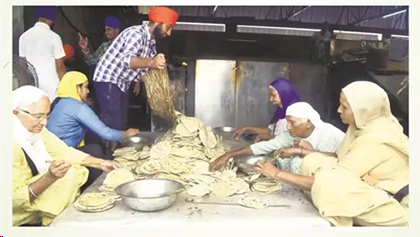
The British and curry
The British raj also introduced some wonderful cuisine. They popularised Indian curry. The word curry came from kari. The British loved meat. Kari is the Tamil word for mutton.
The concept of dry curry powder was created during British times. The British were fascinated by Indian cooking. So wet paste was converted into a dried powder to carry it to England. That is how Madras curry powder was born.
Notes:
- Culinary jottings by Wyvern is a fascinating book.
- Butter chicken is the result of Pakistan/ Bangladesh influence.
- We have come full circle. One pot cooking became popular during Covid.
- Presenting food in an aesthetically appealing way has evolved over time.
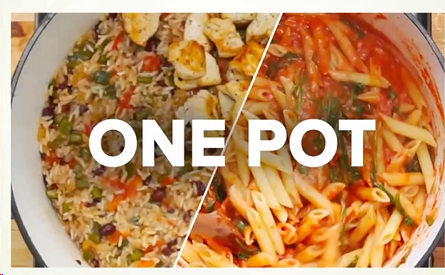
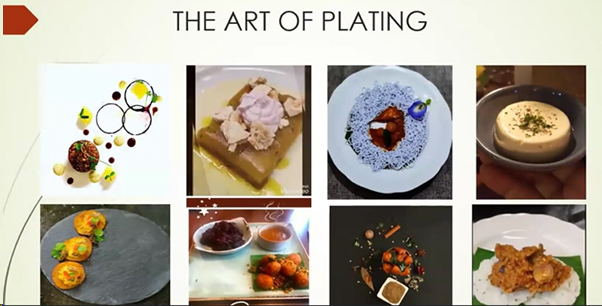
Q&A
Since 2009, Chef Bala’s husband and indeed her entire family have not consumed medicine. Her husband believes that if we listen to the body and understand why it is reacting in a particular way, food can become the medicine.
Mostly, Ms Bala believes in consuming local food. She is very particular about using local oil. She only uses gingelly oil, groundnut oil and coconut oil. She does not use olive or processed oil. Refined oil is used only for frying.
Ms Bala believes in the liberal usage of black pepper. She recommends the consumption of herbs for common cold. Hot rice with grated carrots can be used for stomach ailments. Sweet potato with the skin is good for diabetes. (The Koreans and Chinese use it.) Cynus and migraine can also be treated with natural techniques. Simple culinary techniques can be used for better health without the need to consume tablets. (We should consume medicines only when a fast recovery is needed.)
There is a large time gap between the two empires. (300 BC to 300 CE, 600 CE as per some estimates) Foreign influence was more significant in Vijayanagar compared to Sangam. The Vijayanagar rulers were forward thinkers and had many foreign connections. Foreigners would come for trade. In coastal Karnataka, we can clearly see the Yemeni influence on sea food. Vijayanagar began moving towards contemporary food. For example, wheat was given to south India by this dynasty.
In the Sangam period, there was only the Greek and Roman influence. Egyptians only came to buy pepper. They did not influence the Indian food. Production of alcohol from grapes was introduced in the Sangam period. Earlier, forest herbs and berries were used to make alcohol. Ladies used to serve alcohol. There were rules for serving and consuming alcohol. Rice, millets, sweet potato, broad beans, yam, taro root came from Sangam.
2015-16 marked the start of a renaissance period for Indian food. Our food was put on the global map. Many countries have now accepted our food. (in our form, not fusion food). Many Indian restaurants in New York have received Michelin star certification. This is a very prestigious certification given to restaurants, not to chefs.
Indian food has now been categorized based on the region. Regional food acceptance has increased within the country. Earlier the classification was very broad: north and south. Now, we have regional food classification due to greater awareness. Indian food has been sub categorised in foreign countries as well.
Dosa has been there for a long time in India. The style of making dosas has evolved over time. It is thinner, crispier, today and there are more varieties. But the concept of making dosas has existed since ancient times. Kal dosa, i.e. dosa made on a stone is mentioned in Sangam literature. Tamil is an ancient language. In other words, dosa is an ancient preparation.
Baked items were introduced by the Dutch and the British. Ibn Battuta in his writings mentions samosa. Subsequently, puffs were introduced. Among the south Indian states, Kerala stands out in baking. This is due to the port cities and the foreign influence. Even small bakers in Kerala can give the French a run for their money. The puffs are so crispy! Baking started in the region after the introduction of wheat.
In 1800, Parathas came to India through the sea. The layering concept came from Malaysia to Sri Lanka, Kerala, Tamil Nadu and then other states of India. They first came to Kerala. Hence the name, Malabar paratha.
Lacha paratha is similar. Malabar paratha is stretched thin like a rumali roti before baking. In lacha paratha, the thin filament technique is not used. But the layering technique is common to both parathas.
Preparation of the same item may vary from place to place. But we should have an open mind towards regional cuisine without making comparisons. Each region may have a variation. We should taste it as if we are consuming it for the first time. Then we will appreciate the food. Comparison kills taste. We should not downgrade other cultures.
